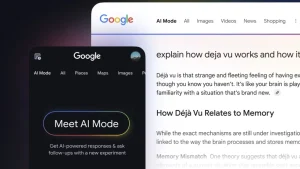Although most smart devices have their own companion apps, most users default to Google Home as the main hub for all smart devices. It’s convenient and the number of supported devices is growing by the day. However, some users report that Google Home is not turning on lights for some reason. If Google Home lights are not responding, make sure to check the instructions we provided below.
In this article:
ToggleGoogle Home not turning on lights
There are a plethora of reasons why smart lights get unresponsive. If you’re referring to the Google Home app, you should definitely check the network, make sure that the bulb is ON, and possibly reset the smart device. On the other hand, if you have issues with Google Home smart speakers turning on smart lights, learn how to fix everything in this article.
1. Check the light switch
In order for smart controls to work with smart lights, the light switch needs to be ON at all times. Therefore, before doing anything else, make sure that the bulb has the power. It’s also advised to turn the light switch off and on again. After that just wait a bit for the smart light to reconnect to your Wi-Fi network or Bluetooth and try turning it off from the Google Home app.
If that doesn’t help, make sure to check the network. Most problems are network related so addressing those is your best bet to fix the problem.
2. Check the network
Light bulbs rely on wireless network connectivity (or Bluetooth) to receive commands from other services. More times than not, when Google Home is not turning on lights, it’s because the light bulb or your smartphone has some connectivity issues. It’s important to set up your lights on the same wireless network, the one that your smartphone (or smart speaker/smart display) is connected to. With that in mind, make sure that:
- smart bulb/smart light strip is connected to a stable network and positioned not too far from the Wi-Fi router. Stick with the 2.4GHz band.
- there are not a lot of devices connected to the same network. If you have the dual-band option, make sure to transfer some devices that support it to the 5GHz band. There are various reports of users who had the same issues until they upgraded their Wi-Fi hardware (a mesh Wi-Fi router system is almost a must if you have a lot of smart devices).
- the region settings in the smart light companion app are set to your region or, at least, a region closest to you.
- Bluetooth is on if you have a Bluetooth bulb.
You can also try resetting your router and your smartphone and then give it another go. If that doesn’t help, you should move to the next step.
3. Remove and add smart lights again in Google Home
The next step is to remove and add a smart light (a smart bulb or smart strip) from Google Home and add it again. This can be done from the Google Home app. This might help. Also, make sure to remove all old devices that are not in use anymore.
Here’s what you need to do:
- Open Google Home.
- Select the bulb that’s not connecting.
- Tap on the settings cog and then Unlink the device. Remember the service name because you’ll need it to link the device again.
- After that, restart your phone and open Google Home again.
- Tap on the plus icon at the top left corner.
- Select Set up device.
- Choose Works with Google.
- Search for the service that accompanies your light bulb or light strip.

- Sign in if necessary and link the bulb again.
- Test the light. If it works, add it to your home and the room of your preference.
On the other hand, if Google Home is still not turning on lights, try resetting the smart device.
4. Reset smart lights and set them up again
If we exclude the possibility of critical malfunction, resetting the smart device to factory settings and setting it up again is always the best way to solve issues. In the case of lightbulbs or strips, you usually need to go through the on/off cycle a couple of times to reset the device. This is not a rule but finding the instructions online shouldn’t be a problem.
Some devices can be set up directly from Google Home while a large number still require an accompanying app. Once you find the app and install it and then find your device in the list, the setup procedure isn’t complicated because these apps usually provide detailed instructions on how to set up a new device.
After you’ve done all that, adding the light bulb to Google Home shouldn’t pose a problem if you follow instructions from the previous solution.
5. Reset Google Home
Although rarely, the Google Home app might be the cause of the problem. You can reinstall or reset the app and ensure that it has all the necessary permissions. To reset the Google Home, you can navigate to Settings > Apps > All apps > Google Home > Storage and clear all data. Once you set up the app again, check if the problem persists.
If that doesn’t work, you can simply reinstall the app from Google Play Store. Don’t forget to permit Google Home access to necessary permissions. And, on that note, we can conclude this article. Hopefully, the instructions we provided here were useful. Thank you for reading and don’t forget to reach out and share your experience in the comments section below.
Editor’s note: This article was initially published in May 2022. We made sure to revamp it for freshness and accuracy.




